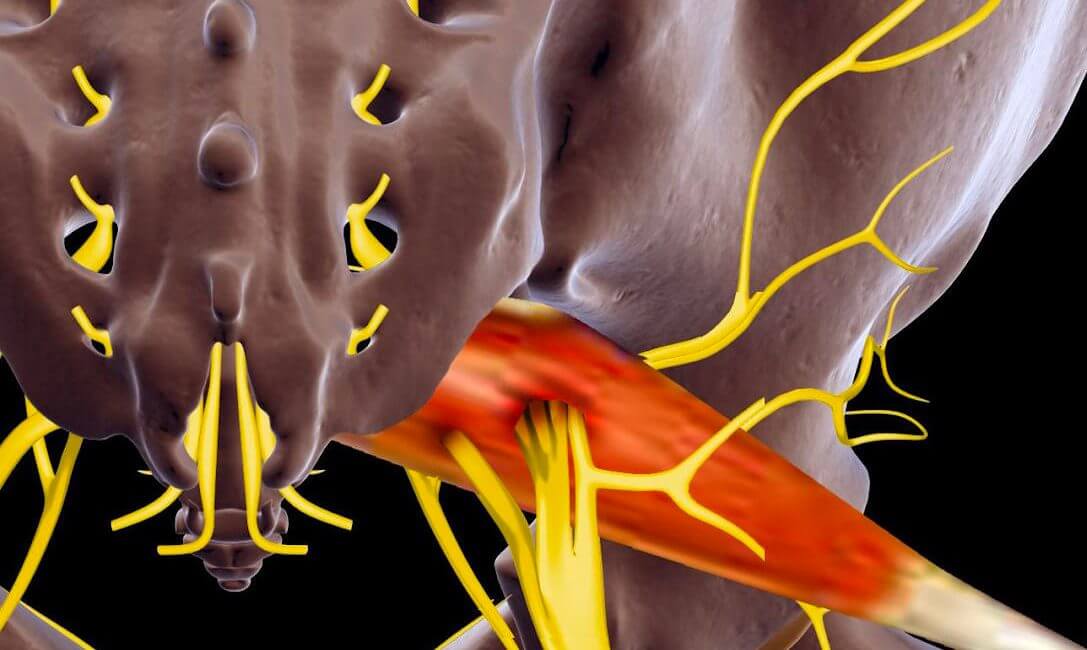The sciatic nerve is a large bundle of nerve fibers that extends from the lower spinal cord and sends branches that innervate the entire leg. All sensory information of the leg travels through the sciatic nerve. Sciatica is a somewhat generic term describing pain or paresthesias (i.e. numbness, tingling) that occurs when the sciatic nerve is pinched, compressed, or inflamed. This nerve compression can occur at various points along the course of the nerve where it travels near the bone, such as at the spine, sacrum, or in the pelvis. The sciatic nerve can also be compressed by the piriformis muscle in the hip. In most people, the sciatic nerve travels under the muscle, but in a certain amount of people, this nerve actually goes through the muscle, making it move likely to be compressed.
 The Sciatic Pain Experience
The Sciatic Pain Experience
Different people experience sciatica differently. Patients may report that the pain is worse after long periods of relative inactivity, such as sitting for a long time. Others may notice their sciatica is aggravated by bending or stretching of the upper body. Sciatica is a symptom, rather than its own disease, therefore determining the cause of the leg pain is the key to proper treatment.
 Treatments for Sciatic Pain
Treatments for Sciatic Pain
Initial attempts at treating sciatica are aimed at reducing inflammation, such as with anti-inflammatory drugs or steroid injections in the area. The goal is to reduce the compression and impingement on the sciatic nerve caused by local inflammation. Other forms of treatment include massage, physical therapy, and chiropractic. In more serious cases and those that do not respond to other treatments, nerve compression may be relieved through surgery.
Stretching and Sciatica
Stretching can help sciatica, whether the root cause is from the impingement at the spine or a tight piriformis muscle. In the case of the spine, the muscles that surround the spine control the position of the individual vertebrae, and loosening and balancing the tension patterns in these muscles can help to keep the spine flexible and not push on the nerves.
In the case of the piriformis muscle- if the tension in this muscle is causing the pain, then stretching the muscle will lengthen and soften it. This will reduce the pressure on the sciatic nerve, helping to ease the symptoms. At iFlex Stretch Studios, our therapists are trained to perform the exact type of stretch that your body needs. Come in and give it a try.


 The Sciatic Pain Experience
The Sciatic Pain Experience Treatments for Sciatic Pain
Treatments for Sciatic Pain

